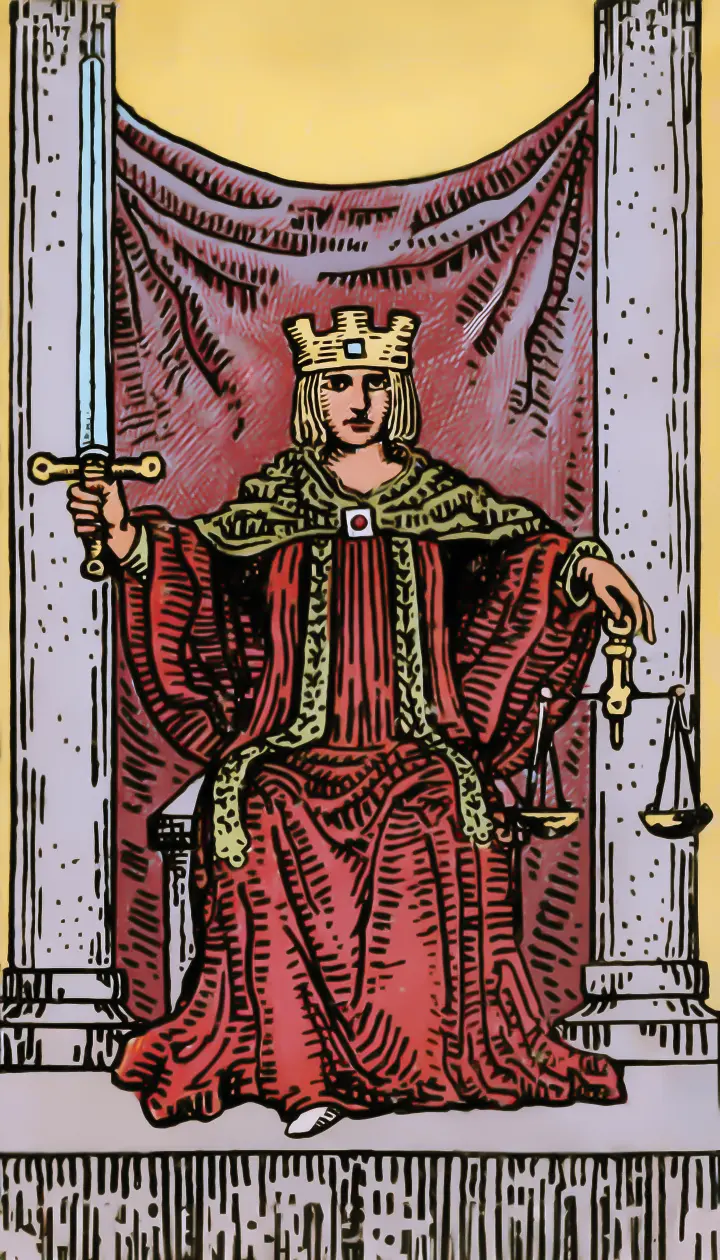
The Justice Card Fully Explained
By DivinationToolThe Justice card represents fairness, clarity, and the consequences of one’s actions. This article explores the upright and reversed meanings of the Justice card and its deeper message about truth, balance, and personal responsibility.
The Justice Card Fully Explained | Balance, Choice, and Consequence
Associated Information
Related Terms: A symbol of balance and justice Corresponding Astrology: Libra Element: Air
Key Words
Rational, just, fair, wise, unemotional, legal matters, balanced judgment, legal system, don't be blinded by appearances.
Upright Interpretation
Wise decisions, seeing the truth clearly, correct judgment and choices, receiving fair treatment, heading in the right direction, reason and justice triumph over all, maintaining balance, justice and fairness in litigation, rebalancing adjustments, impartiality.
Reversed Interpretation
Wrong decisions, unfair treatment, unprincipled, lacking ideals, directionless, unreasonable, biased, stubborn, petty-minded, overly indifferent, emotionally disconnected.
When Justice appears reversed, it represents injustice, unfairness, and biased thinking. The querent may not receive what they truly desire or believe they deserve. The reversed sword symbolizes wrong choices or decisions, leading to misjudgments and mistakes in actions, even causing harm. The falling curtain in the background shows influence from selfishness, subjective opinions, and interested parties—measuring everything against personal gain.
In work, hasty decisions lead to poor outcomes, with possibly worsening results that require healing and compensation later. In relationships, a reversed Justice may indicate separation, such as the termination of a partnership or the possibility of divorce in a marriage.
Detailed Meaning of the Card
When 'Justice' appears, all injustices will be exposed, and every cause will have a fair and balanced result.
'Justice' is the central card among the 22 Major Arcana, representing the principle of balance and equality. The number 11 also symbolizes equal treatment for both sides. The black-and-white pillars behind the figure are the same as those in the High Priestess card, representing duality and opposition.
Before 'Justice,' right and wrong will be clearly judged, good and evil will be rewarded or punished accordingly—this is the manifestation of karma, leaving no room for luck. 'Justice' also guides us toward the right direction and wise decisions.
The scene resembles a courtroom: one hand holds a sword, representing judgment; the other holds scales, symbolizing fair and balanced decisions. The tightly drawn curtain behind suggests no external interference is allowed to ensure justice. The exposed foot indicates this card is not static—it's not just about ideals but includes action, empowering decisions with real consequences.
The pillars resemble the High Priestess's B & J pillars, representing black and white—symbolic of duality—thus this card can be seen as the active version of the High Priestess, highlighting visible, enacted decisions.
In emotional or interpersonal matters, Justice represents fair treatment, though it may come across as rigid or lacking warmth. When related to mediation or legal issues, the upright card signifies that both parties will receive a fair outcome—a just victory. However, both sides may believe they are the righteous one, raising the question: what is the true standard of justice? This can only be clarified with other cards. Often, each side feels the verdict does not align with their own sense of fairness.
After encountering the destiny of the Wheel of Fortune, Justice teaches us to choose our future path with fairness—it calls us to make decisions. Yet people often avoid deciding, passing the responsibility to others, to time, or to a higher force. But if we don't own our choices, how can we truly be ourselves? If we delegate all decisions, we become a patchwork of others' desires or drown in fate's current—how then can we feel our own existence?
The cards preceding Justice—The Wheel of Fortune and The Hermit—introduce fate and solitude. Before making just, independent choices, we must bear solitude. We must accept it and understand that others' fates differ from our own—we intersect only briefly. Realizing that only we can steer our destiny allows us to make life's choices independently in the role of Justice.
At the same time, we must take responsibility for the consequences of our actions under fate. This naturally leads to the theme of the next card: The Hanged Man.